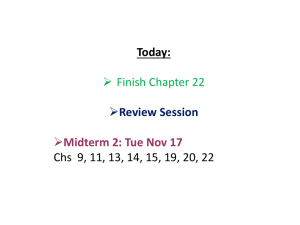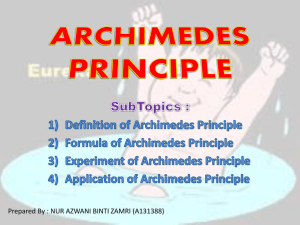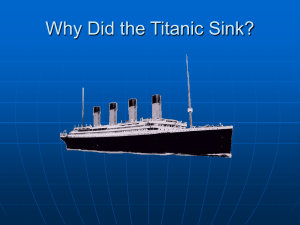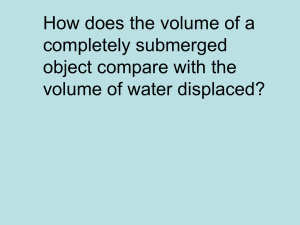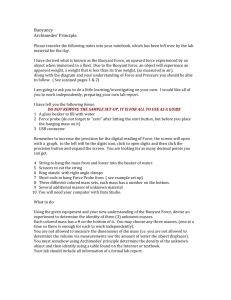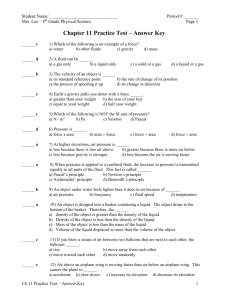PHSC 101 Fluids Lab Name
advertisement
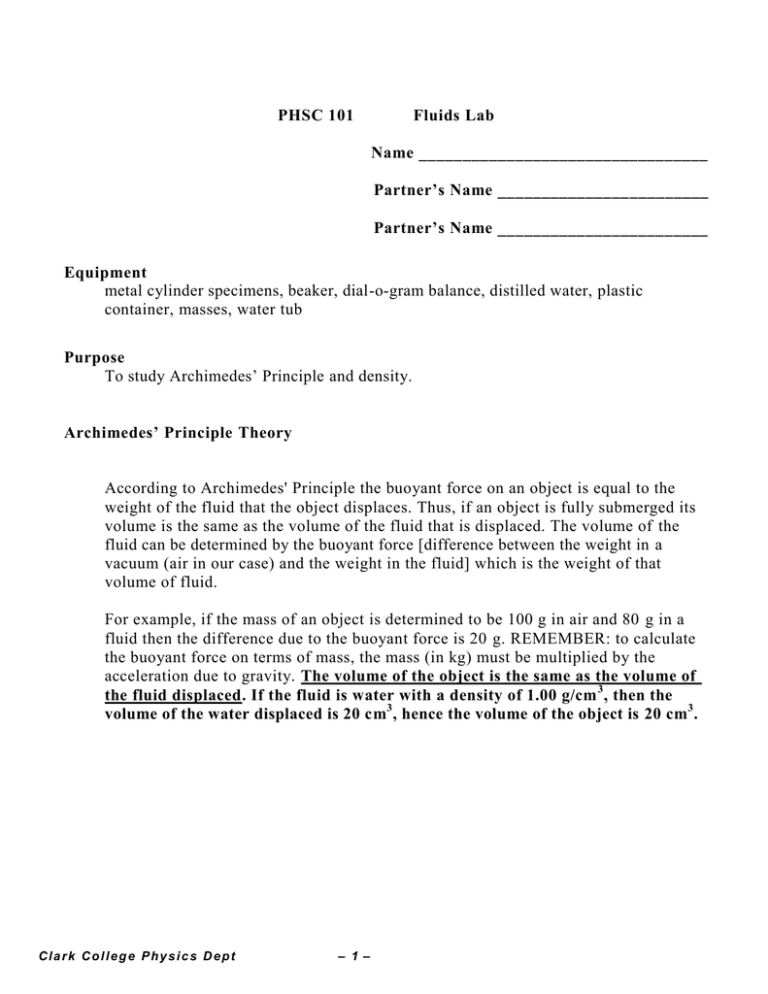
PHSC 101 Fluids Lab Name _________________________________ Partner’s Name ________________________ Partner’s Name ________________________ Equipment metal cylinder specimens, beaker, dial-o-gram balance, distilled water, plastic container, masses, water tub Purpose To study Archimedes’ Principle and density. Archimedes’ Principle Theory According to Archimedes' Principle the buoyant force on an object is equal to the weight of the fluid that the object displaces. Thus, if an object is fully submerged its volume is the same as the volume of the fluid that is displaced. The volume of the fluid can be determined by the buoyant force [difference between the weight in a vacuum (air in our case) and the weight in the fluid] which is the weight of that volume of fluid. For example, if the mass of an object is determined to be 100 g in air and 80 g in a fluid then the difference due to the buoyant force is 20 g. REMEMBER: to calculate the buoyant force on terms of mass, the mass (in kg) must be multiplied by the acceleration due to gravity. The volume of the object is the same as the volume of the fluid displaced. If the fluid is water with a density of 1.00 g/cm 3 , then the volume of the water displaced is 20 cm3 , hence the volume of the object is 20 cm 3 . Clark College Physics Dept – 1– Part 1 Finding Volume Using Archimedes' Principle Procedure: 1. Hang one of the specimens on the balance as shown. Record the mass in air. ma i r = _____________________ g 2. Now submerge the specimen in the distilled water and record the mass. The difference between the two readings is used to calculate the buoyant force. m = m air – m liquid = _______ g m liquid = _______ g 3. Determine the volume of the mass specimens. (Note: If your beaker should have volume markings on the side ignore them. By using the buoyant force principal you will be much more accurate). Record the specimen type and volume. Item _______ Volume _______ Clark College Physics Dept – 2– 4. Now let’s verify the volume of the specimen by measuring it with a ruler and computing its volume. V = πr 2 h for a cylinder, where r is its radius and h is its height. Show your work Item _______ Volume _______ 5. Find the percent difference between the two methods. % Diff. = __________ Part 2 Density Procedure 1. Using the same specimen you used in Part 1, find its density. You already have all of the information that you need to use the formula ρ = m/V where m is the mass of the object. Item _______ Volume _______ Density _______ 2. Now find the density of a new object using water and what you have learned thus far. Record the specimen number (or symbols), mass in air, mass in water and volume. mair = _____ g Item _______ mliquid = _____ g Density _______ Clark College Physics Dept – 3– ∆m = _____ g Part 3 Maximum Ship Load Procedure 1. Determine the volume of the rectangular plastic container by measuring its length, width and height ( V o l = l x w x h ) . This plastic container will be your ship. V = ______ cm3 2. Calculate the mass of water (in grams) that the ship can displace before it sinks by using its volume and the density of water (1 g/cm 3 ) m = ρV mwater = _______ g 3. Now measure the mass of the ship in grams. mship = _______ g 4. According to Archimedes' Principle, the total weight of the ship plus its contents cannot be greater than the weight of water that can be displaced by the ship, otherwise the ship will sink. Calculate the maximum load that the ship can carry and still float. mload = mwater – mship = ___________________ g 5. Now experimentally determine the maximum load that the ship can hold while still floating by loading it with weights until it just barely stays afloat. mload experimental = ______________________ g 6. What is the percent difference between your calculated and your experimental values? % Diff. = __________ Clark College Physics Dept – 4– HOMEWORK Questions. 1. What is the buoyant force acting on a fish 2.0 kg swimming around slowly at the same depth in the middle of a lake? 2. A barge filled with iron beams is in a lock waiting to pass to a new level. If the iron pars are thrown from the ship into the lock will the water level on the side of the lock raise, lower or stay the same? Assume that no water leaks to or from the lock during this process. 3. A rock sample has a mass of 100 grams when massed in air and 80 grams when submerged in pure water. (a) What is the volume of this rock? (b) What is the density of this rock? 4. A 50 kg woman has a density very close to that of water (as do most other humans). (a)Estimate her volume. (b) What mass of air (in kg) does she displace? (The density of air is about 1.2 kg/m 3 .) (c) What is the buoyant force acting on this woman? Express your answer in the buoyant mass (kg). Clark College Physics Dept – 5–

